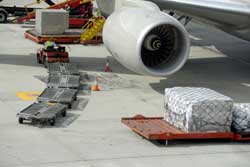Air Travel Statistics
Air travel statistics are maintained by the United States Department of Transportation by the Bureau of Transportation Statistics (BTS).
The BTS was established in 1992 and its purpose is to create and manage statistical knowledge of all modes of transportation and subject matters related to transportation and to provide that information to the country as well as to public and private transportation groups.
| Its mission is to develop high quality transportation data, use statistical products to promote knowledge about transportation and assist transportation decision makers and researchers to make more effective use of this knowledge. |  |
Air travel statistics are used for many purposes by the airlines. They use them for strategic planning, to understand the profile and travel patterns of United States travelers, to assess the volume, characteristics and economic impact of international travel, to study passenger demand in and out of the United States, track international visitors, to determine ways to bring more customers to airlines in the United States, to track safety of the airlines, to maintain social and demographic information on its passengers, and for national security.
Tourism stakeholders use these statistics to help design web sites, promote tourism in specific areas, to determine the demand for hotel occupancies, to plan air travel and to keep abreast of the airline industry.
There are a variety of air travel statistics maintained by the BTS. One report that is done on a monthly basis is of the number of passengers who have flown, and the amount of mail and freight transported by certified United States and foreign air carriers.
 |
Also included in this report is information on the types of aircraft used, the capacity for transport that is available and the number of aircraft hours in the air. Summary data on non-stop flights and market data is also maintained. On-time performance data is calculated for actual and scheduled departure and arrival times for the major United States air carriers. |
It also includes items on departures and arrivals that are delayed, cancelled or diverted flights, time in the air and non-stop distances.
Air travel statistics are also maintained on airline ticket information. The information gathered from the tickets includes origin and destination of the flights and details about the passengers. It is used to determine patterns of air traffic, market shares of air carriers and passenger flows.
Data is kept on an annual basis on the number of aviation accidents, injuries and fatalities. Scheduled and non-scheduled commercial air carriers, commuter planes, air taxies are tracked as well as general aviation planes. Information on planes damaged and destroyed per year as well as ground fatalities is also saved.
As well as information regarding accidents, safety information is also reported and maintained by the National Aeronautics and Space Administration for the Federal Aviation Administration.
Finally, information is retained about United States and foreign carriers, locations of worldwide airports, and other geographic data. Also included in this set of data is information on the various aircraft types, their manufacturers and model names and numbers. This information is important to tracking the size of the domestic and foreign airline industry.
Return from Air Travel Statistics to Air Travel Tips homepage




